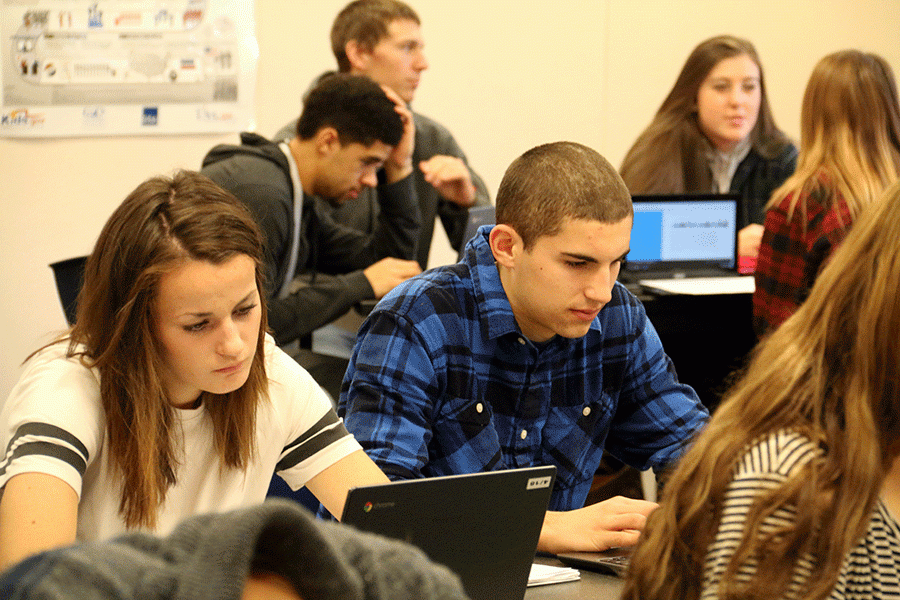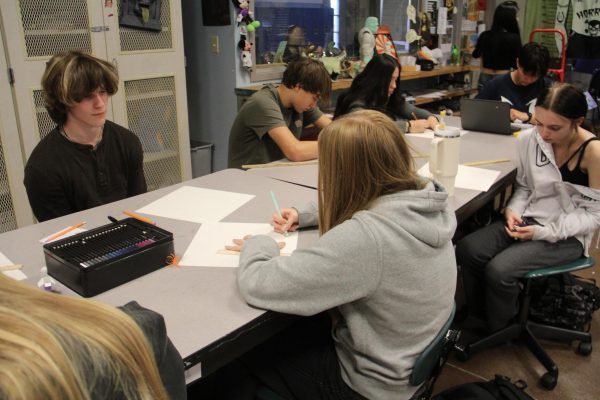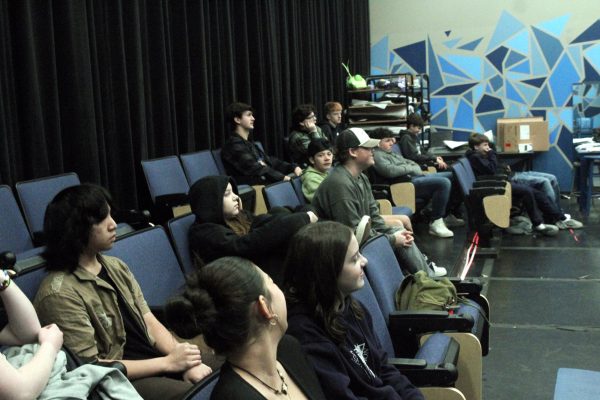Students Tackle “Diffusion of Responsibility” in the High School Setting
Seniors Cameron Ferriera and Channing Hudson working during second period.
Diffusion of responsibility, or the bystander effect, is a psychological phenomena that affects us everyday whether we know it or not. This concept describes the human tendency to bypass someone in obvious need when they are surrounded by a large group, as we believe somebody else will take charge of the situation.
AP Psychology teacher Sean Cunningham described diffusion of responsibility as a “classic illustration of conformity and power of situation,” which are two prominent areas of study in social psychology.
“We instinctively want to help, but compromise our morality with our comfort, and our comfort is to conform,” said Cunningham. “There’s a greater likelihood for this diffusion with more people, and it becomes less likely with only one person because our instincts kick in.”
In the high school setting, this effect is seen to a lesser degree of severity, considering students in need are taken care of immediately. However, the concept is still relevant.
Senior Cameron Ferreira took AP Psychology with Mr.Cunningham first semester and learned about society’s tendency to diffuse some of their personal responsibility. Ferreira described that he sees this take effect, saying, “when people spill a drink and people will see it and not do anything about it. [A] few people will go grab paper towels to clean it up and not leave it for the janitors.”
Senior McKenna Henderson, another one of Cunningham’s first semester students, sees the effect manifest when someone drops something in the hallways.
“They think someone else will help the person in need because they’re around a large group,” said Henderson.
Although this phenomena is ingrained in human psychology, Ferreira and Henderson both believe that it can be reduced.
“I think it’s up to people who are viewed or view themselves as a leader like ASB, sports captains, or club officers,” said Ferreira. “People in positions of leadership need to step up and take responsibility. If people started going the extra mile, it would make the environment more interconnected. It is a snowball effect. It’s a group effort to solve the problem instead of putting it all on the custodians.”
Henderson put it simply: “People just need to help others in the hallway and take responsibility for what they should.”
It’s something that requires attention on the part of the student body in order to make high school a more welcoming and safe place. When one person steps up to lend a helping hand, they create a new group to conform to, prompting others to also take on the responsibility of helping their peers.
“Power is in numbers, but there’s not necessarily safety in numbers,” said Mr. Cunningham.









